Legal Requirements
The Legislation
On 1st October 2006 the Regulatory Reform (Fire Safety) Order 2005, came into force. All existing fire legislation was repealed including the Fire Precautions Act 1971, Fire Precautions (Workplace) Regulations 1997/99 and the Management of Health & Safety in the Workplace Regulations 1999.
Fire certificates are no longer issued and have been replaced with the requirement for a Fire Risk Assessment. Employers are now solely responsible for fire safety within their workplaces.
If you are: -
- responsible for business premises
- an employer
- self-employed with business premises
- a charity or voluntary organisation
- a contractor with a degree of control over any premises
The new law affects you!
The Regulatory Reform (Fire Safety) Order 2005, states the following : -
The responsible person must make a suitable and sufficient assessment of the risks to which relevant persons are exposed for the purpose of identifying the general fire precautions he needs to take to comply with the requirements and prohibitions imposed on him by or under this Order
Although best practice states that it would be better if the Competent Person is an employee, many small and medium sized businesses do not have the resources in time or money to have an employee committed full time to this work. A company may therefore employ third party assistance to complete the Fire Risk Assessment.
Where does the new legislation apply?
The Fire Safety Order 2005 applies to virtually all premises and covers nearly every type of building, structure and open space. For example:
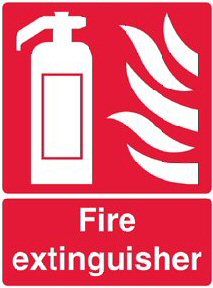
- offices and shops
- factories and warehouses
- hotels and hostels (premises providing sleeping accommodation)
- residential care premises
- educational premises
- community halls
- common areas of houses in multiple occupation
- pubs, clubs and restaurants
- open air events (inc tents and marquees)
- healthcare premises
- transport premises and facilities
But it excludes purely domestic premises occupied by a single family group.
Carrying out fire risk assessment
A fire risk assessment helps identify all the fire hazards and risks in your workplace.
You can then decide whether they are acceptable or whether you need to do something to reduce or control them.
Who should do the risk assessment? Someone who has had sufficient training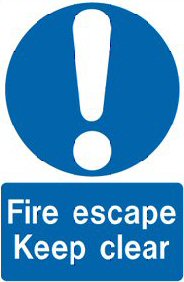 or has good experience or knowledge of fire safety.
or has good experience or knowledge of fire safety.
This can be a complex survey, depending on the type of property or the type of business carried out at your premises. We can take you through the process of making your fire risk assessment. This can be done by going through the 5 steps below or contact us for a quotation or to book a survey
Step 1 - identify the fire hazards
Step 1 - Identifying the fire hazards
For fire to occur there must be a source of ignition, fuel and oxygen. If all three are present and in close proximity in the workplace, then the fire risk could increase as a result. In the average workplace, fire hazards will fall into the first two categories, whilst the oxygen will be present in the air in the surrounding space. Occasionally oxygen can be found in chemical form (oxidising agents) or as a gas in cylinders or piped systems.
Potential sources of ignition could include:
- naked flames smokers materials, matches, pilot flames, gas/oil heaters, gas welding, cookers, arson, etc.;
- hot surfaces heaters, engines, boilers, machinery, lighting (e.g. halogen lamps), electrical equipment, etc.;
- hot work welding, grinding, flame cutting;
- friction drive belts, worn bearings, etc.; or
- sparks static electricity, metal impact, grinding, electrical contacts/switches, etc.
Potential sources of fuel: anything that burns is a potential fuel, examples include:
- solids textiles, wood, paper, card, plastics, rubber, PU foam, furniture, fixtures/fittings, packaging, waste materials, etc.
- liquids solvents (petrol, white spirit, meths, paraffin, thinners, etc), paints, varnish, adhesives, etc.
- gases LPG, acetylene.
Your risk assessment should list the potential sources of ignition and fuels that are present in your workplace.
Step 2 - Identifying people at risk
If there is a fire, the greatest danger is the spread of the fire, heat and smoke through the workplace. If this happens, the main risk to people is from the smoke and products of combustion, which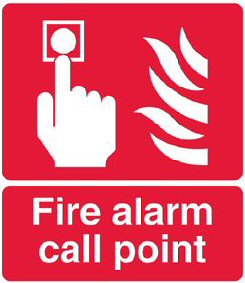 can very quickly incapacitate those escaping. If a workplace does not have adequate means of escape or if a fire can grow to an appreciable size before it is noticed, then people may become trapped or overcome by heat and smoke before they can evacuate.
can very quickly incapacitate those escaping. If a workplace does not have adequate means of escape or if a fire can grow to an appreciable size before it is noticed, then people may become trapped or overcome by heat and smoke before they can evacuate.
Your assessment of risk to persons should include:
- the likely speed of growth and spread of any fire, and associated heat and smoke (remember some fuels burn much faster and produce more toxic products than others do)
- the numbers of persons working in the area including contractors, visitors, members of the public
- how will they become aware of any fire that occurs will any outbreak be conspicuous or will some form of fire detection and alarm system be required and
- how they will make their escape (can they make their way out quickly, easily and safely?).
Step 3 - Evaluating the risks
Once the hazards and the persons at risk have been recorded, you must assess the effect of any particular hazard on the occupants of the workplace, taking account of any existing control measures that are already in place. Once this has been done, you must decide if any further control measures are needed in order to reduce the risk to an acceptable level.
Further control measures may act to reduce the possibility of ignition, minimise the potential fuel load in the workplace, or assist persons to escape from the effects of a fire, should it occur.
They may fall into a number of different categories:
- Fire safety management systems.
- Means of escape.
- Staff training.
- Fire warning systems.
- Means of fighting fire.
Different control measures can be applied to reduce the risk to an acceptable level. For example, if the risk is the possibility of a fast growing fire, potential control measures could include one or any combination of the following:
- changing the process to use a slower burning fuel
- removing all possible ignition sources
- moving the hazard to an area that affects the minimum of persons, e.g. outside the premises
- providing an additional exit/protected route to speed the escape of the occupants
- providing a fire detection and alarm system to warn persons of the fire in its early stages
- training the staff to reduce the possibility of a fire occurring, e.g. housekeeping/safe working, practices or
- providing appropriate firefighting equipment / fixed installation e.g. sprinkler system.
While this list is not exhaustive and applies to one area of risk only, it can be seen that there may be a number of different solutions depending on the nature of the situation.
If any areas of inadequacy are identified, an action plan must to be included to show how the problem is being addressed. This should include time scales for achieving the required level of control and specify who is responsible for the action.
If your workplace is situated in a relatively modern building it should already incorporate important control measures that were installed to meet the requirements of the Building Regulations e.g. fire escape staircases, fire lobbies, fire doors, emergency lighting etc. Many of these measures will also be found in older buildings.
You should include details of these existing control measures in your fire risk assessment. Remember, a full understanding and evaluation of the existing control measures is essential - it is your starting point for deciding if any further action is necessary.
Step 4 - Recording your findings
If you employ five or more employees you must record the significant findings of your risk assessment, together with details of any people that are at particular risk. More importantly, the record must show whether the existing control measures are adequate and, if not, what further action is required to reduce the risk to an acceptable level.
Remember to make sure any control measures identified or introduced remain effective by testing and maintaining them regularly. For larger workplaces you are encouraged to include a simple floor plan in your fire risk assessment. You can use the plan to record fire hazards and control measures in a simple format that is easily understood.
If your workplace has a Fire Certificate issued under the Fire Precautions Act you may wish to cross reference your fire risk assessment with your fire certificate plan.
Fire Mediation can provide a structured report and a detailed floor plan, of your premises, that will meet the RRO (Fire Safety) Order 2005
Step 5 - Reviewing and revising the risk assessment
It is important to remember that fire risk assessment is a continuous process and as such must be monitored and audited. New and existing control measures should be maintained to make sure they are still working effectively.
However, if you introduce changes into your workplace your original risk assessment may not address any new hazards or risk arising from them. For this reason it is also important to review and revise your assessment regularly.
This doesn't mean that it is necessary to amend your assessment for every trivial change that occurs, but the impact of any significant change should be considered. For example:
- A new work process may introduce additional fuels or ignition sources.
- Changes to furniture layout or internal partitions could affect the ability for employees to see a fire and escape in time.
- Increasing the number of employees may mean that a fire exit is now too small to cope with their escape within a safe period.
- Occupying another floor of the building may mean that an electrical fire warning system is now necessary, etc.
The above list is not exhaustive and any change that could lead to new hazards or risks should be considered.
If any of the above changes occur at your premises, it is a legal requirement to carry out a revised assessment. Fire Mediation can carry out a review of your fire risk assessment and if we did your initial survey, this could be done at a fraction of the cost
Emergency Plan
Once you have carried out a detailed fire risk assessment you must provide a written emergency plan. 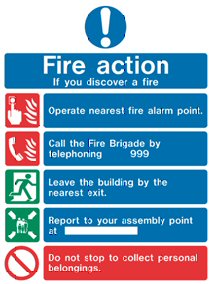 This will be specific to the workplace and will detail the pre-planned procedures in place for use in the event of a fire.
This will be specific to the workplace and will detail the pre-planned procedures in place for use in the event of a fire.
This must include the following features:
- action on discovering a fire
- warning if there is a fire
- calling the fire brigade
- evacuation of the workplace including those particularly at risk
- power/process isolation
- places of assembly and roll call
- liaison with emergency services
- identification of key escape routes
- the firefighting equipment provided
- specific responsibilities in the event of a fire and
- training required.
Remember to test your emergency plan by practising it with your employees, and if necessary discuss it with your local emergency services.
Employees
As an employee, you can help keep yourself safe from fire at work if you are aware of fire and health and safety regulations
Most workplaces are now covered by the fire regulations which means your employer 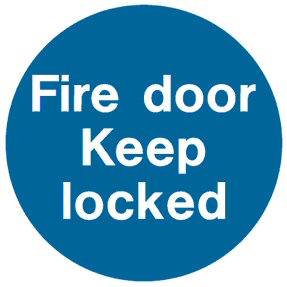 has a responsibility to make sure you and others in the workplace are safe, should a fire break out.
has a responsibility to make sure you and others in the workplace are safe, should a fire break out.
But you also have a duty under Health and Safety Regulations for your own safety and that of your colleagues.
Duties
As an employee, you can help keep yourself safe from fire at work if you are aware of fire and health and safety regulations. Here are your duties as an employee.
When you're at work you should always:
- Co-operate with your employer so they can comply with statutory duties for health and safety.
- Tell your employer and/or health and safety manager urgently of any work situation that might present a serious and imminent danger. You should also notify any shortcomings in the health and safety arrangements, even when no immediate danger exists, so that remedial action can be taken if needed.
- Take reasonable care for your own health and safety and that of others who may be affected by your actions or omissions at work.
- Use all equipment correctly, in accordance with your training and the instructions you received to use it safely.
What you should know
As an employee, you can help keep yourself safe from fire at work if you are aware of fire and health and safety regulations. Follow these guidelines on fire safety at work.
When you're at work you need to:
- Understand and comply with the safety policies in your workplace.
- Know what action to take on discovering a fire or hearing the fire alarm and the arrangements for calling us.
- Know the evacuation procedures and assembly points.
- Familiarise yourself with escape routes and fire exit signs.
- Know the locations and types of fire extinguisher available and how to use them.
- Report any instances of increased risk.
- Keep fire doors closed to stop the spread of fire, heat and smoke.
- Report any thoughts you may have on reducing risk.
- Remind yourself, on a regular basis, of fire safety issues.
- Set a personal example of good fire safety.